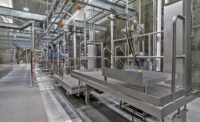Engineers are finalizing design for a 17-mile-long pipeline that will deliver methane gas from a landfill in Muskego, Wis., to fuel a wastewater treatment plant in Milwaukee.
The pipeline is the first step in an $80-million investment that will save the Milwaukee Metropolitan Sewerage District (MMSD) at least $148 million over the next 20 years by enabling its Jones Island plant to generate its own heat and electricity by burning landfill-generated methane instead of natural gas.
In addition to saving money, the plant will also cut greenhouse-gas emissions by 500,000 tons a year. MMSD tentatively plans to seek bids from pipeline builders in May or June and begin construction of the approximately 16-in.-diamenter, low-pressure pipeline by August or September.
After the pipeline is completed in early 2012, MMSD will put new methane burners into the dryers that help convert micro-organisms into commercial dry fertilizer, which will be marketed as Milorganite. The $6-million burner changeover is planned for 2012.
New turbines, at a total cost of $55 million, will replace two 40-year-old electricity-generating turbines. The new units will cut the Jones Island plant’s natural-gas purchases by 90% and eliminate the need to buy electricity from a utility.
The new turbines will generate 24.5 megawatts—enough to power all the plant’s electrical needs, even during peak use. The peak electrical draw comes after particularly heavy rains, when MMSD cranks up the pumps that pull stored wastewater out of deep-tunnel reservoirs for treatment. Peak draw represents roughly 10% of the plant’s operating time, according to Kevin Shafer, MMSD executive director.
The other 90% of the time, says Shafer, the Jones Island plant needs about 11 MW for operation, so MMSD can sell the extra 13.5 MW of electricity back to the grid.


Post a comment to this article
Report Abusive Comment